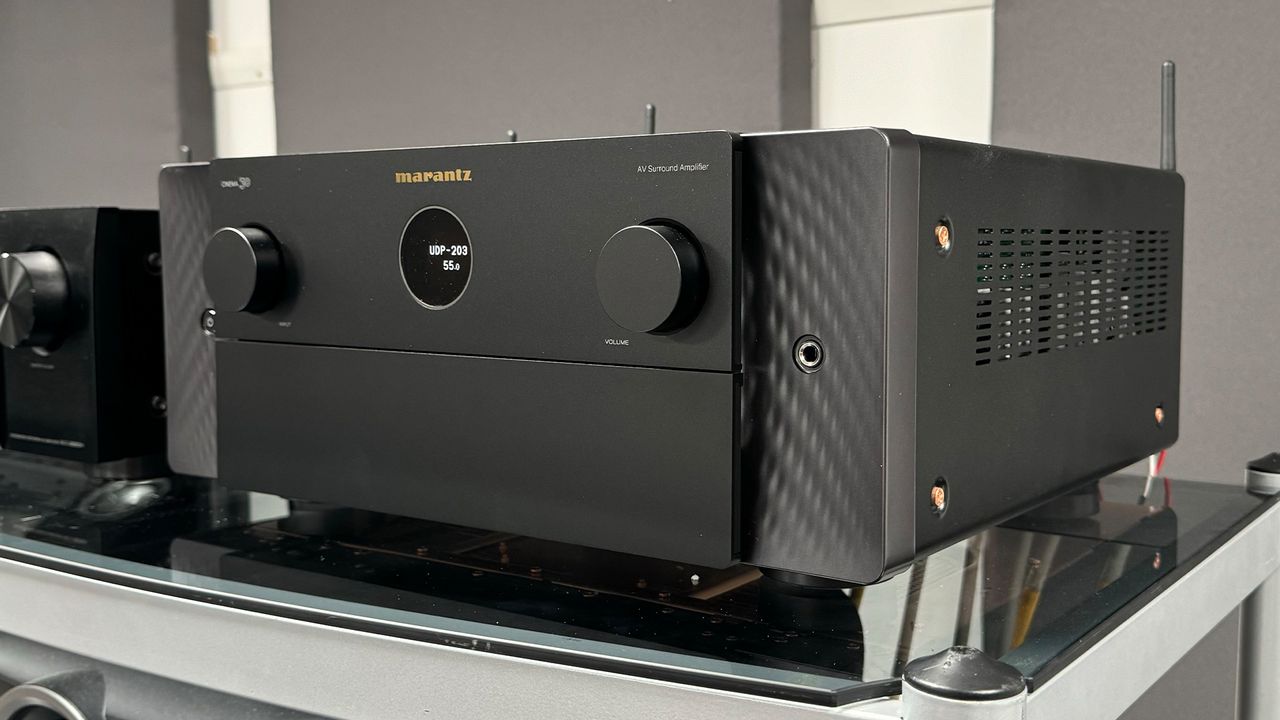
It has been a long while since we had a Marantz AVR in for review. The premium brand has taken something of a back seat while its parent company (previously Sound United, now Masimo) has instead focused on sending products from sister brand Denon out for review.
That makes sense to a degree. We review on a performance-per-pound basis and Denon products, though far from cheap, are performance-per-pound masters. Marantz products, though, tend to be priced a bit higher and have usually been styled to a degree that Denons have not.
Now, though, we have the new Marantz Cinema 30 in for review. A UK-exclusive review, no less. So what has changed? We suspect that Masimo simply feels that it has a great-sounding AVR on its hands. One that can justify its premium price with an equally premium performance. If that is its evaluation, we have good news: it’s very much our evaluation, too.
Price
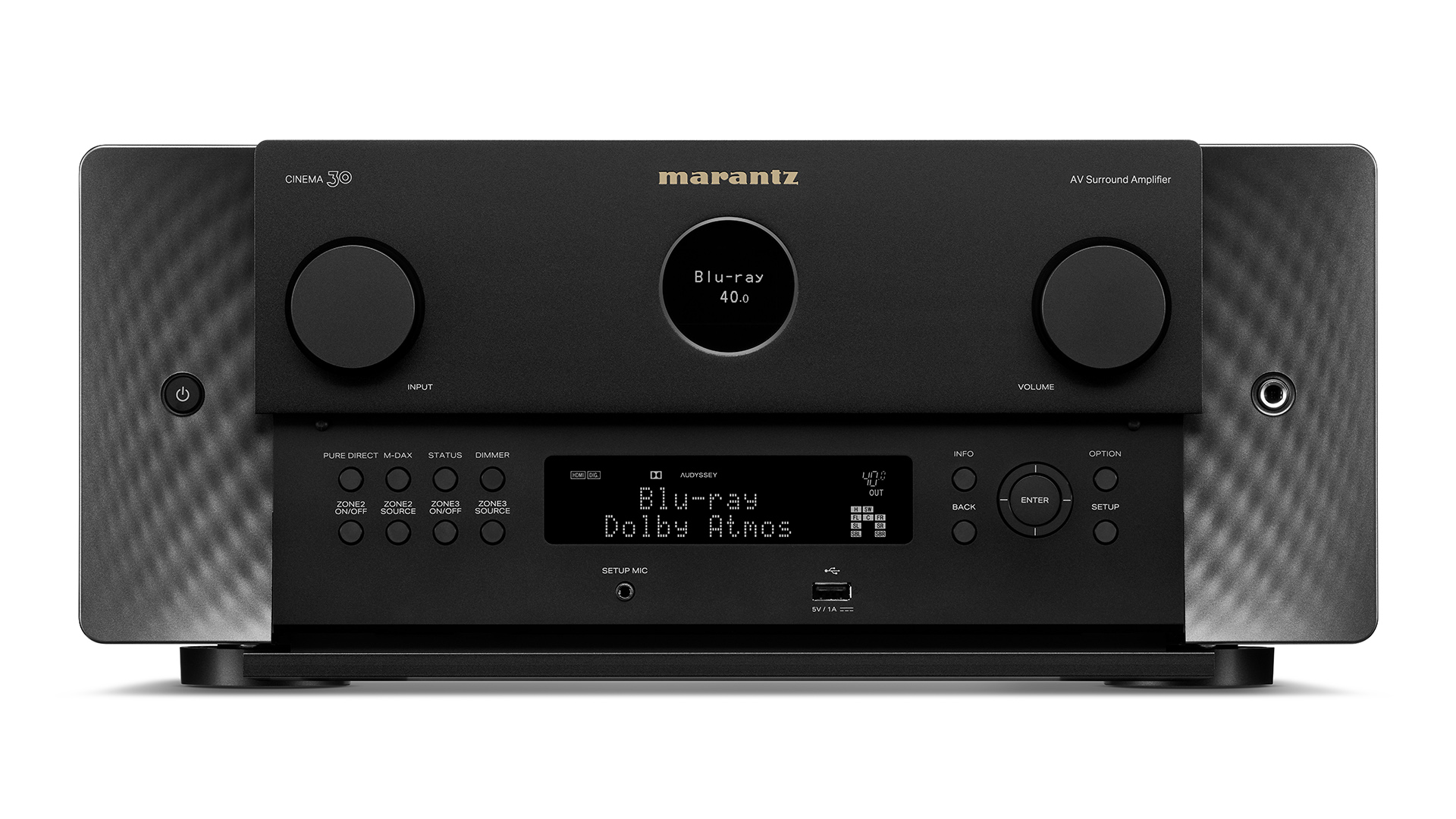
The Marantz Cinema 30’s premium price is £4000 / $4500 / AU$7900. That makes it vastly more expensive than the Denon AVC-X6800H with which it shares some components and features. It’s also much more expensive than the preceding SR8015 was at launch – though that was in 2020.
It’s much less expensive, though, than the Award-winning Arcam AVR31, which has only seven channels of amplification compared with the Marantz’s 11.
It is worth noting that the US and Australian versions of the Cinema 30 have an FM/AM tuner whereas the UK (and EU) version does not. We have been assured that the units available in each region are otherwise identical.
Design
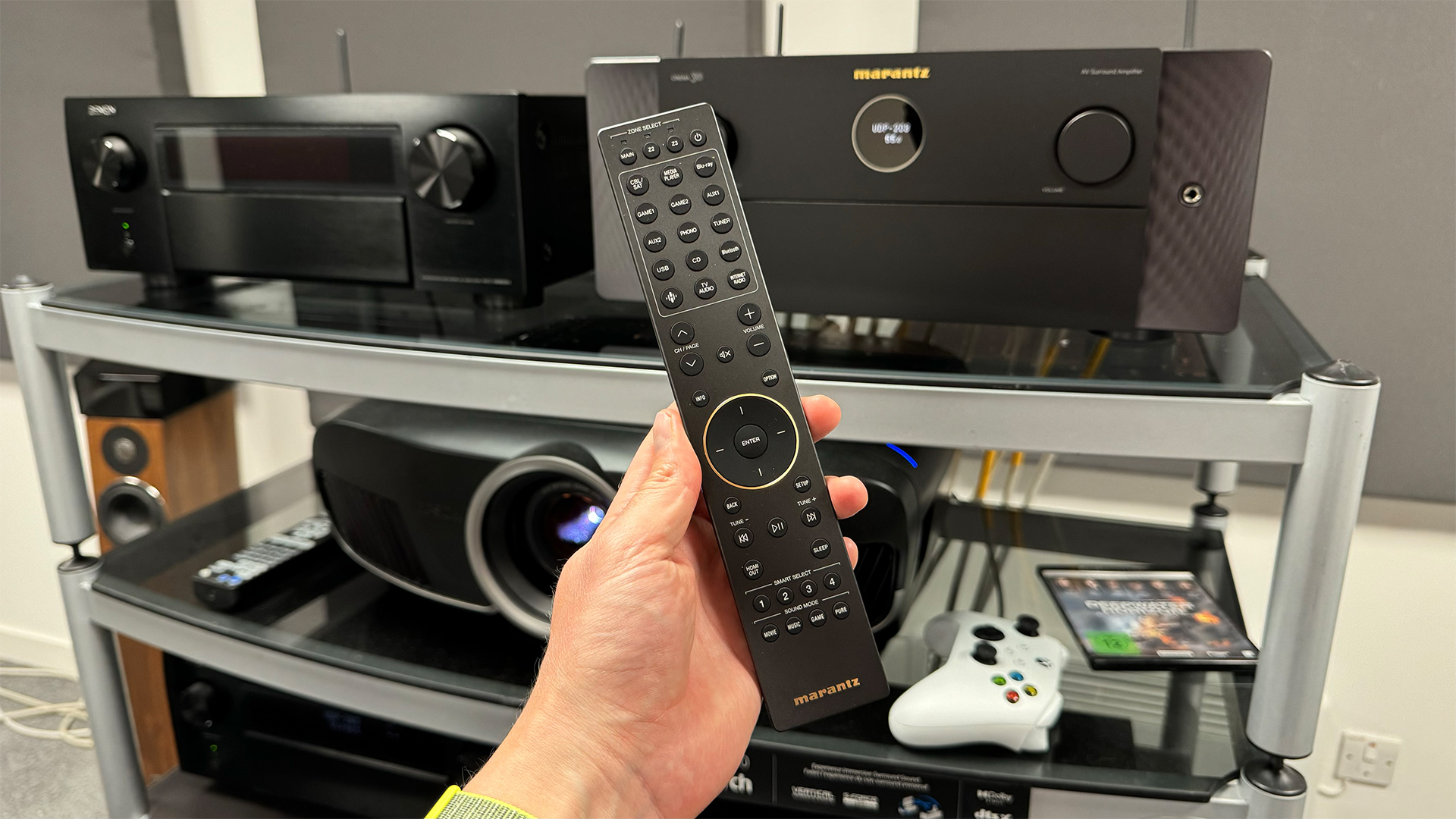
If you appreciate AVR aesthetics, you will probably love the Cinema 30. It’s got all of the heft that one could want from a serious piece of home cinema kit, but it’s got oodles of style, too, from the carbon fibre-like finish left and right of the raised centre panel to the identical size of the volume and source knobs and the small, circular ‘porthole’ display that is a Marantz trademark. The AVR is perfectly symmetrical, too, with the 6.3mm headphone output on the right-hand side mirroring the identically sized power button on the left.
It’s a really clean design, but pop open the front panel (which has a lovely, weighty but smooth action, it has to be said) and there’s a second, larger display and a set of occasionally useful buttons.
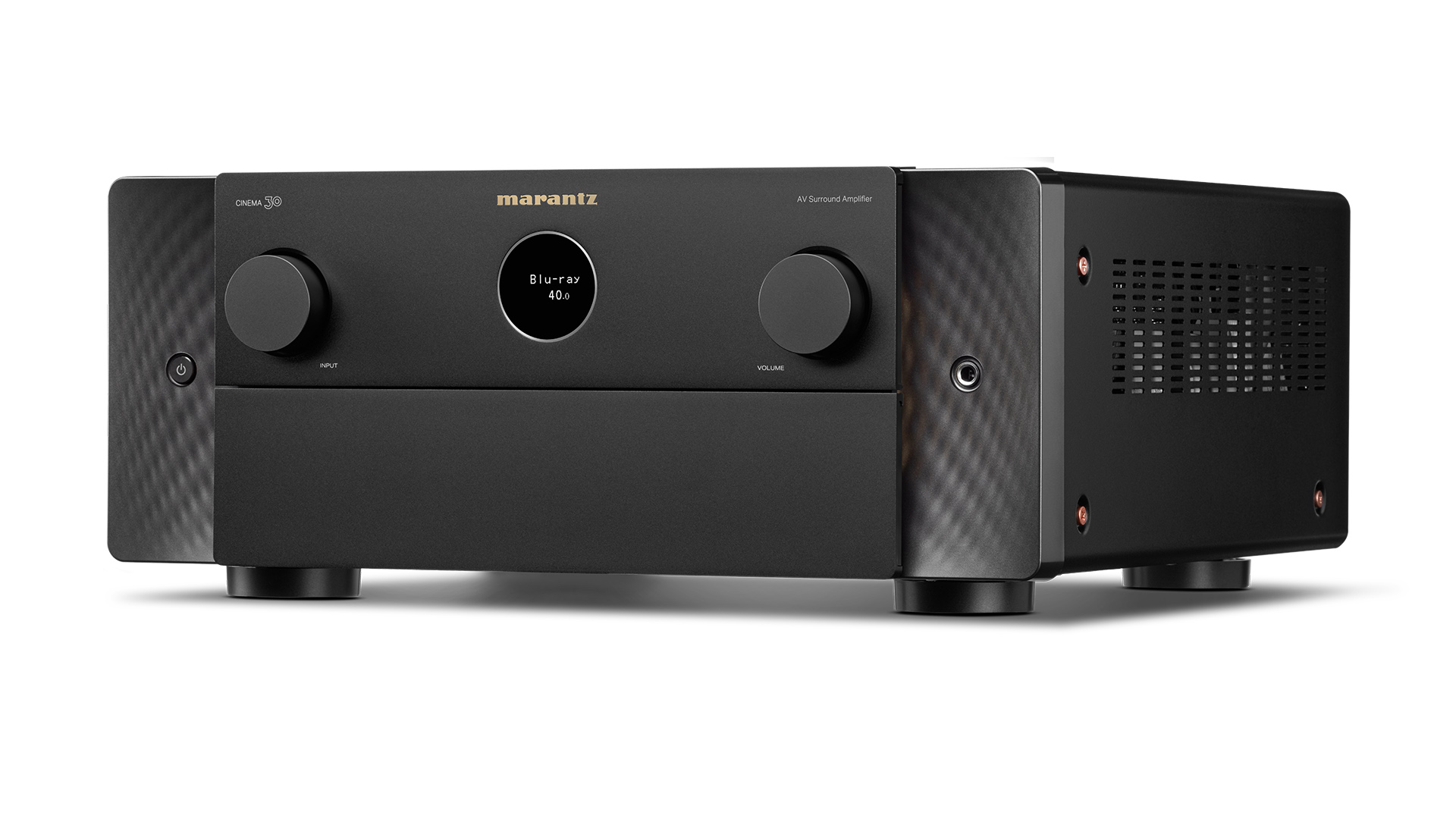
HDMI inputs x 7
HDMI outputs x 3
ARC/eARC eARC
HDMI 2.1 features 4K/120Hz, 8K/60Hz, VRR, ALLM, QMS on all rear HDMI inputs and two outputs
Amplification 11 channels
Power 140W per channel
Processing 13 channels
HDR formats HDR10, HDR10+, HLG, Dolby Vision
Audio formats Dolby Atmos, Dolby TrueHD, DTS:X, Neural:X, Auro-3D
Streaming HEOS, AirPlay 2, Spotify Connect, Amazon Music HD, Tidal, TuneIn, Roon Tested, Bluetooth
Voice assistant Compatible with Alexa, Google Assistant, Siri
The copper-plated bolts on the side that fix the top panel to the rest of the chassis are a neat touch, and this colour carries over to the rear panel, which is identical to that of the smaller Denon AVC-X6800H in terms of the provided connections and their layout. Copper-plating features inside the chassis, too, apparently to aid heat dissipation.
Back to the front, and that raised centre part of the front panel emits a faint white light to either side – an unnecessary but still classy touch that you can disable if you want to put the amp into stealth mode for movie night.
The remote control is also classy. Svelte, stylish and logically laid out, it’s a delight to use. It even has a dedicated button for activating the backlight right where your thumb naturally rests. This may seem like a lower-tech solution than an automatic backlight, but it’s arguably better in that you don’t have the issue of the remote lighting up and distracting you when it shouldn’t.
Features
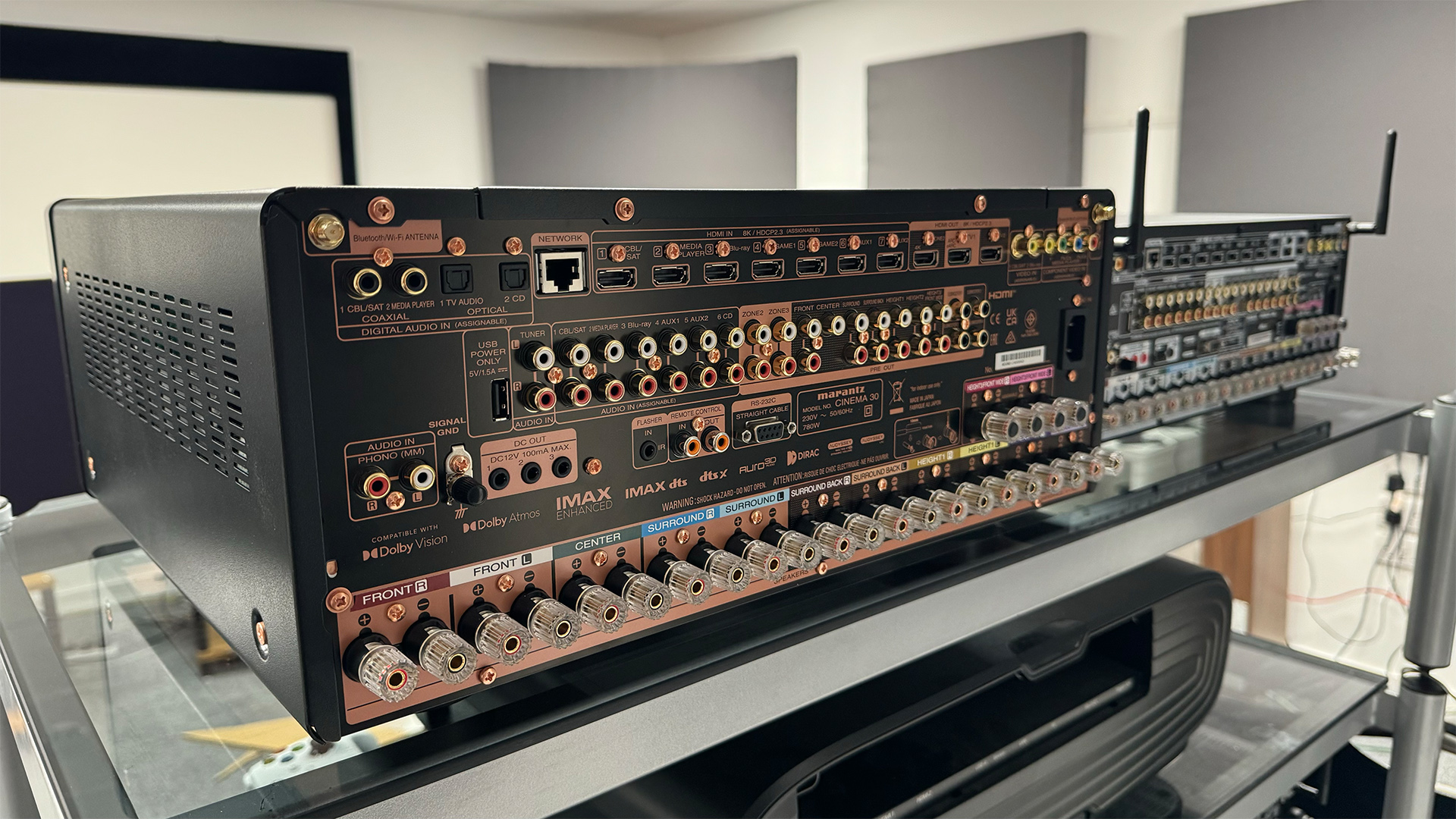
If the Cinema 30 is the first AVR you've used in a few years, you will be thrilled by how much more straightforward first-time setup now is. The 'Setup Assistant' (which, other than the background images, is identical to that of the Denon AVC-X6800H) runs in HD on your TV or projector screen and gives you a lovely step-by-step guide to every part of the process, including positioning, connecting and calibrating your speakers. It even includes a section – with animations – on correctly stripping and connecting bare-wire speaker cables.
As ever with Denon and Marantz products, the built-in calibration is through Audyssey. Using the included microphone, you take measurements from eight locations around your listening position. It’s a simple process that anyone can follow but it does take around 10-15 minutes in total. The time spent is worth it, though – we find the automatic calibration to be very accurate in terms of speaker distances and crossovers, and the room correction is very effective.
If you would like to further tinker with room correction, the Marantz Cinema 30 is compatible with the Audyssey MultEQ Editor app, but this will set you back £20 / $20 / AU$31. You can alternatively swerve Audyssey entirely and use Dirac for calibration instead, but you will also have to pay extra for that. There is, of course, the option to go old-school and manually input speaker distances, trim volume levels and change crossover points, should you so wish.
The Cinema 30 isn’t quite as confusing as older Denon and Marantz AVRs when it comes to active processing features, but there are still several of them and they can make a big difference to sound quality. The first is Audyssey Dynamic EQ, which is designed to compensate intelligently for listening at lower volumes. The idea is that when you have to listen quietly (because the kids are in bed, for example), you still get the bass presence, clarity and surround effect that you should. For home listening, this can be very useful, but it’s not something that we use for testing. If you choose to enable Audyssey Dynamic EQ, you also then have the option to enable or disable Audyssey Dynamic Volume, which reduces dynamics so that wild swings in volume are less of an issue – again, useful at times but not how you want to listen to the AVR if you can help it.
Audyssey MultEQ XT32, meanwhile, is essentially the Audyssey speaker calibration and room correction in action. It is switched on by default once you have been through the calibration process, and we recommend leaving it on unless you are a power user who wants to get deep and dirty with the settings or switch to Dirac.
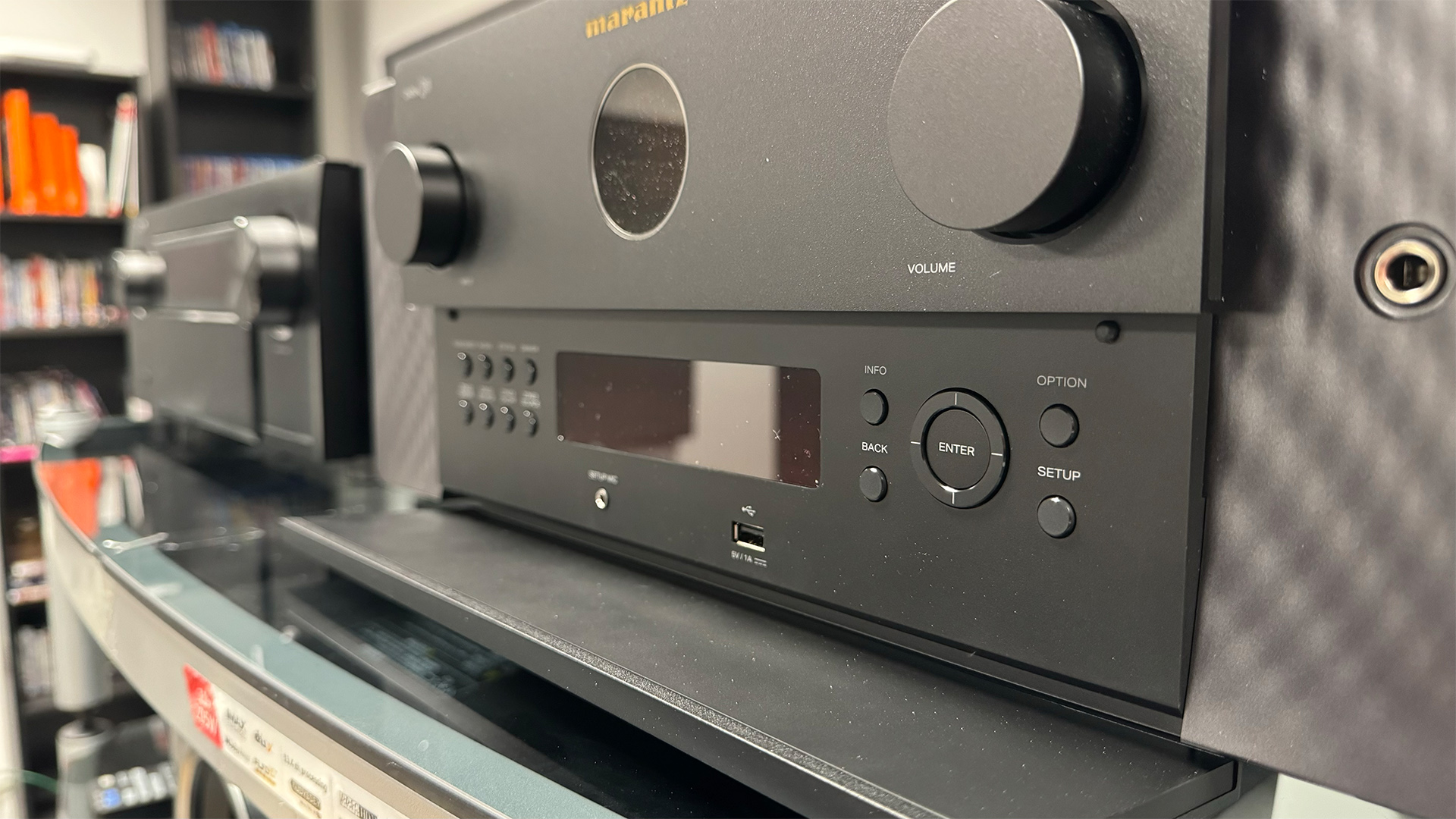
While Marantz and Denon products come from the same umbrella company and feature some shared components, each brand has its own dedicated team of sound engineers (each led by its own 'Sound Master', no less) that tunes its products to deliver the expected sonic characteristics. In essence, Marantz products are designed to sound warmer, richer and smoother than those from Denon.
In terms of hardware, the Cinema 30 (as with many other Marantz products) features HDAMs whereas their Denon siblings do not. These are essentially amplifier modules that consist of discretely mounted components rather than an integrated circuit, and they allow for greater fine-tuning of performance by Marantz’s engineers. Marantz claims that the HDAMs in the Cinema 30 (which are ‘optimised’ versions of the HDAM SA-2s from the SR8015) outperform regular op-amps in terms of slew rate (essentially responsiveness) and noise performance, apparently resulting in a 'more dynamic, accurate and detailed sound'.
The Cinema 30 also features a newly developed DAC section with 32-bit ESS digital-to-analogue converters, a new power supply and new power amplifier transistors. The toroidal transformer from the SR8015 remains, but almost everything around it has changed.
Unlike Arcam and JBL’s premium AV amplifiers, the Marantz Cinema 30 boasts 11 channels of amplification (rated at 140W per channel at 8 ohms with two channels driven). It also features four subwoofer outputs, and if 11 speakers isn’t enough for you – because you want to add front-wide speakers to a 7.4.4-channel system perhaps – the Marantz can process an additional two channels that can be amplified by a separate power amp.
3D Audio support is, as you would expect, extensive. Dolby Atmos and DTS:X are on board, of course; the latter in its 'Pro' form and IMAX Enhanced offshoot. Auro 3D is supported, too, as is 360 Reality Audio.
Denon’s own HEOS platform is built-in for music streaming. We suspect that most people these days will send music to their amplifier directly from the app of their chosen streaming service (Tidal Connect, Spotify Connect, for example) or using one of their phone’s wireless protocols (Chromecast, AirPlay 2 and Bluetooth are all supported), but HEOS can still be useful, particularly if you have multiple compatible products throughout your home. The Cinema 30 is 'Roon Tested', too, and full 'Roon Ready' certification is expected soon.
All seven of the HDMI inputs and two of the outputs support 4K/120Hz (or 8K at 60Hz) and all other advanced gaming features. It is worth noting, though, that the bit-rate of these HDMIs is 40Gbps rather than the maximum 48Gbps. This isn’t an issue now and there’s no sense that it will become one soon, but it could one day prove to be slightly limiting. The third HDMI output is intended for a second zone and is limited to 4K at 60Hz.
Sound
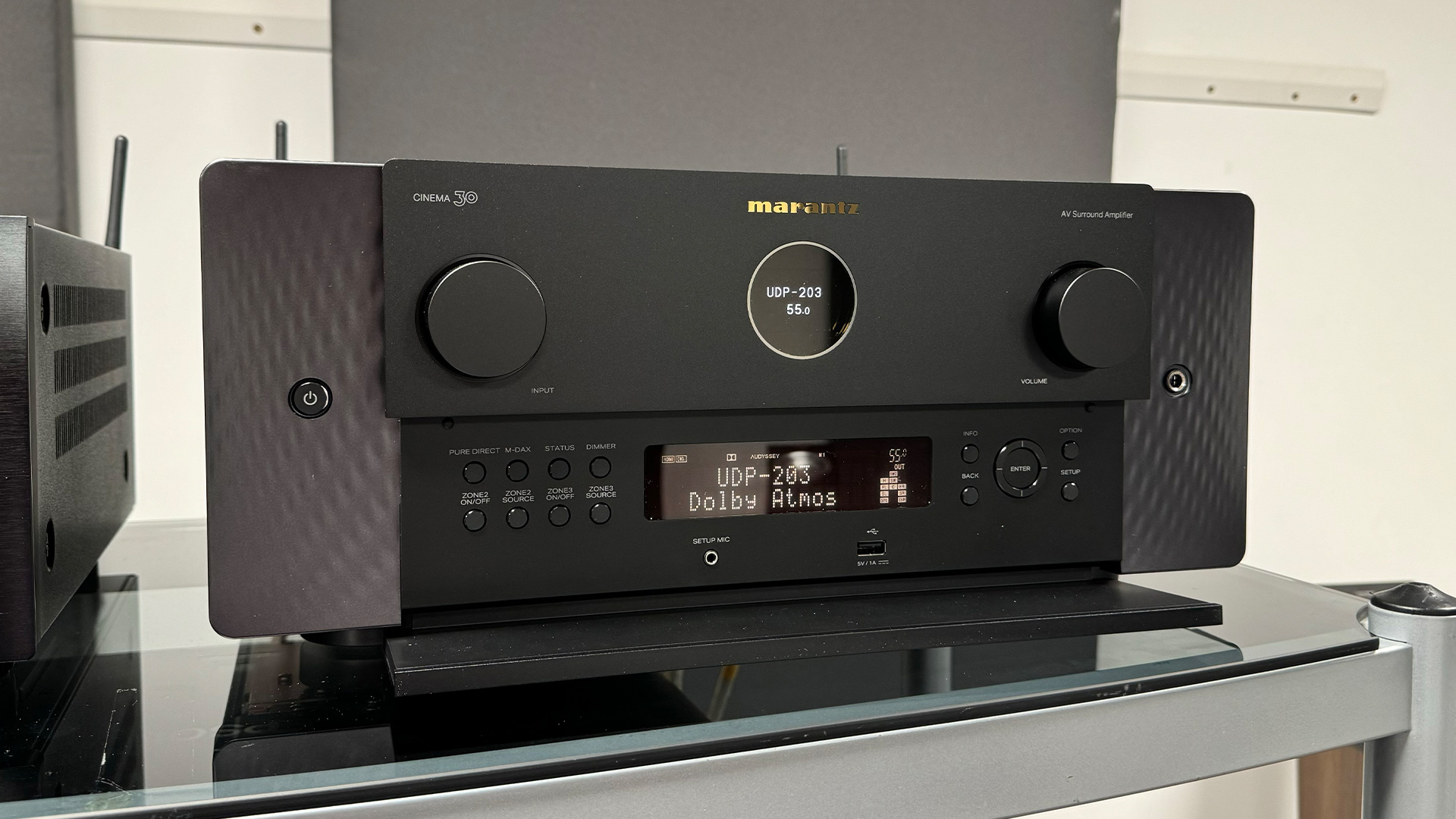
For our test, we have the Marantz connected to our PMC Twenty5.23 7.2 speaker package, to which we’ve added four KEF Atmos 'toppers', resulting in a total 7.2.4-channel setup. Our source is the trusty (and sadly long-discontinued) Oppo UDP-203.
Having patiently run in the Cinema 30 over several days and then run through the Audyssey calibration process, we settle in for our first serious testing and are immediately somewhat underwhelmed by the slightly flat and dull delivery. Surely this isn’t what Marantz now tunes its AV amplifiers to sound like…?
Having quickly dispelled that notion, we switch from the default Movie preset to Direct which, as is the case with most AVRs, adds a bit of pep to proceedings. It doesn’t entirely solve the issue, though, so we dig deeper into the menus and without too much trouble discover the culprit – Dolby Loudness Management, which is apparently enabled by default. Turning this off immediately makes a huge difference to the sound, which instantly sounds punchier, weightier and more dynamic.
Thankfully, that is as much additional tweaking as we deem necessary throughout our testing, which is otherwise a glorious marathon of movies and music.
We kick off with the classic Mad Max Dolby Atmos demo, which begins with a voiceover and culminates in a car chase (with a bit of crunchy lizard in between). You don’t hear Max’s voice coming from any of the speakers – you hear it right in the middle of the room, hovering slightly over the listening position, disembodied and echoing around almost as if it’s your own inner monologue. It goes, hopefully, without saying that no soundbar can recreate this sort of thing in the same way, no matter how many additional speakers it has.
Switching to Deepwater Horizon, which unexpectedly has an incredible Dolby Atmos soundtrack, the Marantz’s ability to place sounds precisely in three-dimensional space combines with a knack for producing an absolutely huge and enveloping soundscape to audibly transport you to the creaking, cracking chaos of the deep sea rig post-explosion. Detailed little sound effects – crumbling plaster, dripping water, an electrical short and a high-pitched alarm – appear from all around you and together fill the room. Again, you hear the sounds, not the speakers.
Rewind a bit and the long build-up to the main event quickly allays any fears that Marantz’s propensity for smoothness might have robbed the Cinema 30 of its impact. On the contrary, debris from the explosions smashes into windows and against metal panels with awesome ferocity. The scene is breathtaking, yet you get the sense that the Marantz is always in perfect control.
This sense of control is further evident when we switch to our usual Blade Runner 2049 chapter two stress test, with the Cinema 30 delivering the near sub-sonic bass with oodles of weight and all of the punch required to drive the scene as intended, yet giving no indication at all that it’s even close to breaking a sweat. It’s such a clean and controlled delivery with no rough edges, but all of the required impact is there.
Again there is excellent organisation and a seamless, enveloping presentation that fully transports you to the environment of each scene, from the stark, confined box in which K takes his baseline test to the open, chaotic streets of dystopian LA. When K returns home to his virtual girlfriend, Joi, the Marantz is able to display its warm and natural way with voices, which are also packed with all of the detail and delicate dynamic information required to convey the subtle emotion in every line.
We round off the movie section of our listening marathon with Dune Part II. A scene in which Harkonnen soldiers attempt to hunt down the Fremen in a dust cloud before realising it is in fact they who are being hunted is a great example of the Marantz’s ability to go quiet. The silence between effects is vital in building tension and foreboding, and it makes each small effect more meaningful. As the hugely weighty hum of the ornithopters fades and the soundtrack fades to near silence, we can hear only footsteps in the sand and the tense breathing of the increasingly fearful Harkonnen troops. A loud yell from one character temporarily shatters the tension, echoes throughout the room and fades organically to another brief period of quiet tension. Then we get the precise thumps and slices as soldiers are picked off one by one. As the Fremen chant emerges from the dusty darkness, you can fully appreciate why the ordinarily fearless Harkonnen are suddenly so afraid.
One of the reasons Marantz products are tuned in the way they are is to make them more musical, and the Cinema 30 is a case in point. We switch the amplifier to Pure Direct here so we are listening just to the front stereo channels with no additional processing, and the overall delivery is miles better than that of most AV amplifiers. James Blake’s bassily challenging Limit To Your Love is despatched in the Cinema 30’s typically unflustered fashion and with lovely clarity and control.
The delivery is smooth and refined, but that doesn’t mean it’s lacking drive, as a switch to Sleep Token’s The Summoning attests. Rival amplifiers can sound slightly more attacking, but they regularly veer into unwanted aggression as they struggle to keep a grip on proceedings. The Marantz, though, is thrillingly agile and solid while also unfazed and refined, even at very high volumes.
With Tool’s Invincible, the Marantz delivers a superb sense of the gentle dynamics of the first minute. Maynard James Keenan’s voice sounds tonally lush and the flutter he affects is beautifully rendered. The Cinema 30’s organisation is once again flawless and there’s lovely richness to the bassline and drums. The delivery of dynamics is superb, too. We’re not talking about those huge, obvious shifts (though those are excellent), but the gentler differences that are sprinkled right through the track and produce goosebumps through the Marantz but don’t through our Denon AVC-X6800H.
Verdict
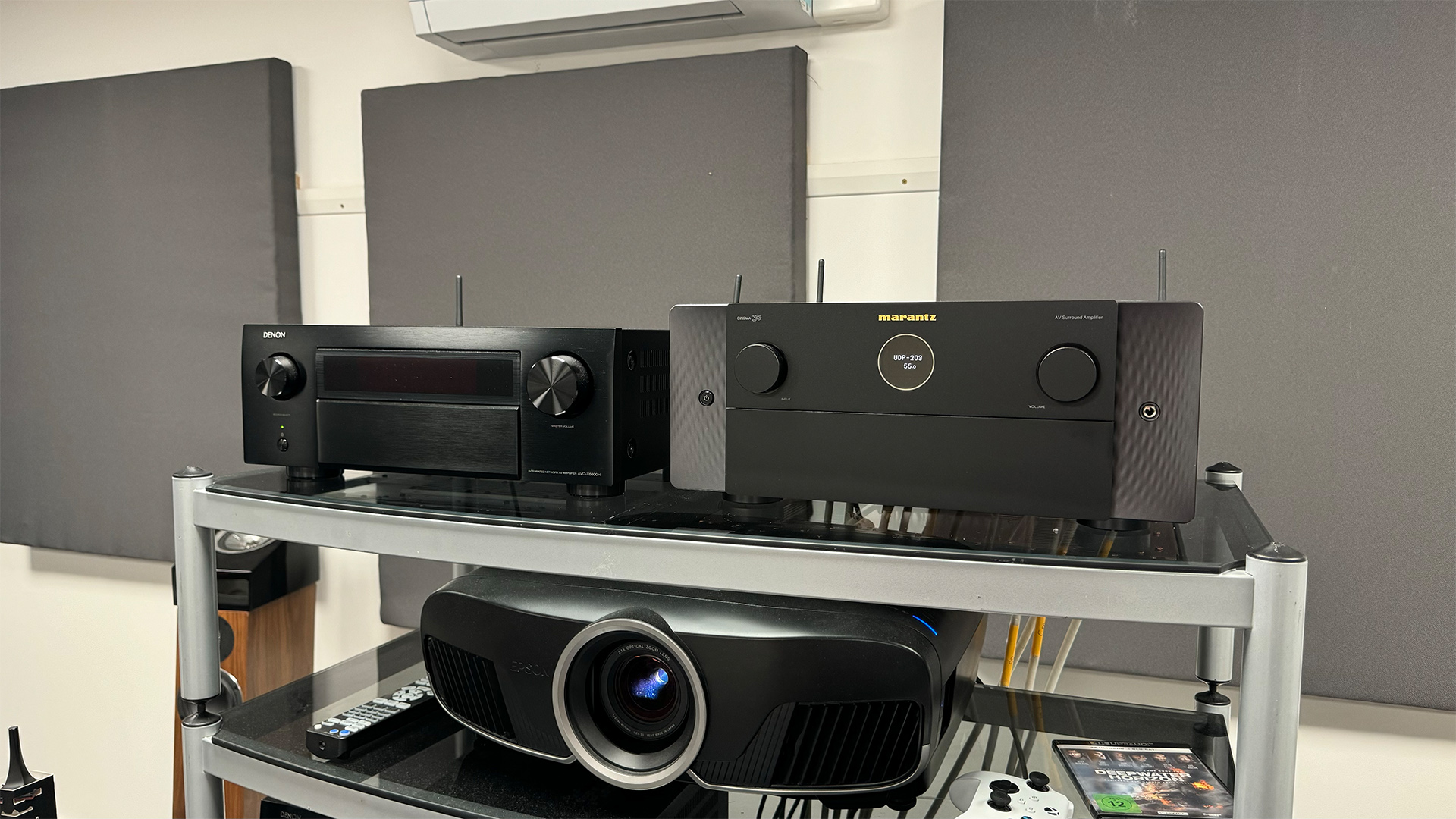
As is probably clear by now, the Marantz Cinema 30 is an absolutely superb AV amplifier. It has the promised richness, smoothness and control, but it also delivers all of the scale and punch that one could hope for – and it’s talented with music, too.
Add a beautiful design, great useability and a very straightforward setup process and you have a product with almost no flaws – other than the fact that it’s more expensive than most of us will ever be able to afford, of course.
Published: July 2024. Updated: November 2024.
SCORES
- Sound 5
- Build 5
- Features 5
MORE:
Read our review of the Denon AVC-X6800H
Also consider the Arcam AVR5
Read our Arcam AVR31 review
Best AV receivers: the top home cinema amplifiers we've tested







